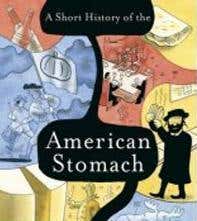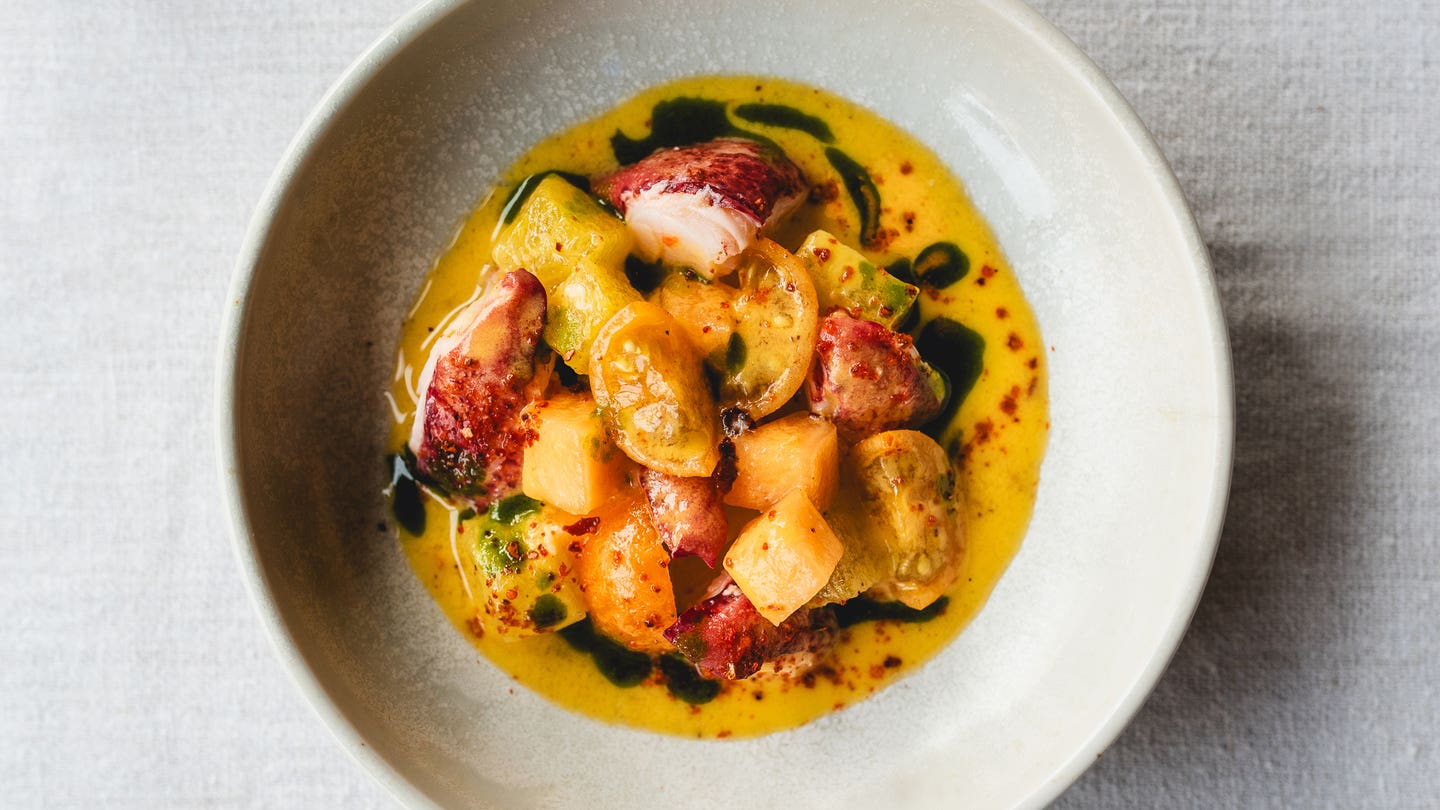
Eating History
In his new book A Short History of the American Stomach, journalist Fred Kaufman turns a critical eye on the cultural and digestive history of the United States, drawing connections between current culinary trends and the extreme food philosophies of our nation's forefathers. He sat down with SAVEUR recently to discuss the link between the Puritans and crash diets, the allure of food television, and why it's worth paying attention to what we feed Fido.
**In A Short History of the American Stomach you note that the Puritans who settled New England had a long history of purging and fasting. To what degree do you think that tradition still influences the way Americans eat today?
**
It's at the basis of our diets today. The Puritans gave birth to bulimia, anorexia, and the idea of perfecting ourselves through what we may and may not eat. They believed that the soul was the great digester and that what came into and out of the stomach was a specific indication of your relationship to God. In other words, when people were advised to vomit—which was a very common Puritan cure for any ailment—it was seen as a form of exorcism. What we've inherited from the Puritans is an obsession with the purity and the pollution of the stomach. Today's diet books are all about perfecting your body as opposed to falling prey to food sin.
**So, modern eaters should pay attention to the eating habits of 17th- and 18th-century Americans?
**
I think we can go through our lives beautifully day to day forgetting about yesterday. When I looked into the history of the American stomach, I thought I was going to find a situation very different from what we have today, but I was wrong. It's instructive to understand that the way we feel about our stomachs, and eating and not eating, has been with America for a long, long time. Even Benjamin Franklin was a big foodie who thought the key to personal perfection began with what you ate.
**Lately many Americans have grown nostalgic for a time when food was more seasonal and regional. In fact, at the end of 2007, Oxford University Press made locavore its word of the year. What do you make of this trend?
**
Once again, we think it's a new thing, but it's not. The first Thanksgiving was about local foods. William Alcott, a graduate of the Yale medical school and one of the great food gurus of the early 19th century, was a great believer in local food; he instructed housewives to make plain, "unperverted" puddings for their households. The ideology reached its culmination in Sylvester Graham's paranoia about store-bought bread. The original graham crackers derived from his recipe for making bread in the biblical way. Graham believed that we should return to our original ways of making food because food was the key to salvation.
**You were one of the first cultural critics to point out similarities between popular cooking shows and pornographic videos, and your essay "Debbie Does Salad" created quite a stir when it was published in Harper's a few years ago. Is there a reason you chose to start A Short History with excerpts from that piece, even though the subject of food television is more contemporary than your other topics?
**
My editor and I spent an inordinate amount of time trying to figure out how to start this book. At first I started it with the diet book chapter. Then we tried to go through chronologically, but, ultimately, the book is not chronological history. The idea is to understand American eating. So, I wanted to start in medias res, right in the middle of things, watching food TV and see where that brought us, looking both forward and backward.
**You've dubbed Giada De Laurentiis a "glamazon" and Rachael Ray "the girl next door". Do food television personalities, in your opinion, distance us from our food, or do they bring us closer?
**
One of the mottos of the Food Network is "Taste life". That is deeply ironic. The big lie is that it is more lifelike than life itself, when in fact it makes us voyeurs who just watch while we sit back drinking our soda and eating our chips. In a way, it becomes a substitute for actual cooking.
**Is the same thing is true of food writing?
**
I think our entire media culture has taken on an unbelievable reverence for the virtual.
**Do you watch food TV regularly?
**
No, I don't, I'm sorry to say. My editor wanted a chapter on food media for the book, and my editor at Harper's said, "Great, let's turn that into an article." But since writing it I haven't watched more.
The first time I watched Rachael Ray I was bowled over. Emeril, too. I was even lucky enough to be allowed on the set to watch Sara Moulton. Her director told me that watching food television was like taking Ativan. It's domestic bliss made easily transferable, and that's the real danger of it. Working for that domesticity, making a house, cooking, and being together is not a simple thing in real life. We watch food TV to get a hit of that feeling, and then we can just throw something in the microwave and eat crap alone in the dark.
**Last fall, you wrote a piece for the New York Times Magazine about pet food. How did you make the leap from thinking about what people eat to what we feed our animals?
**
I'm always blown away by supermarkets. One day I want to write about the huge aisle of drinks: why do we need all that water? I had the same reaction in the pet food aisle. I wanted to know what happened. How did it all get here?
While I was reporting, I discovered that the way we feed and care for our pets mirrors our feelings about ourselves and food. The trends in our diet—raw, organic, home cooked, "slow"—are now all reflected in the food we feed our animals. I asked one woman who was passionate about drinking raw milk how she got into it, and she said, "Well, I was feeding my dog unpasteurized milk, and then I tried it myself." At that point, something clicked; I thought, Your pet is becoming an extension of you.
Pets have been following human eating patterns since the dog was domesticated 10,000 years ago. The first commercial pet food hit the shelves in the 1880s, created by a man who traveled to England with his dog and noticed that it ate the stale biscuits on board. And the first extruded dog food actually came from the machines at Purina that were making Chex. Their genius was that they marketed it at supermarkets, not feed stores—and it was a huge hit. Dogs and cats continue to feed on the remnants of the human diet. Whatever we don't eat, they eat. There's an incredible link. It's a $15 billion industry controlled by really big players. The exact same thing that's happening to the human food chain is happening for your pet.
**What are you working on now?
**
I'm still writing about eating, but I'm starting to think about other involuntary human activities, as well, like sex and sleep. It started with my interest in human digestion. My feeling is that Americans are really controlled by their involuntary nervous system, and that explains a lot about our politics and our economics.
Keep Reading
Continue to Next Story










